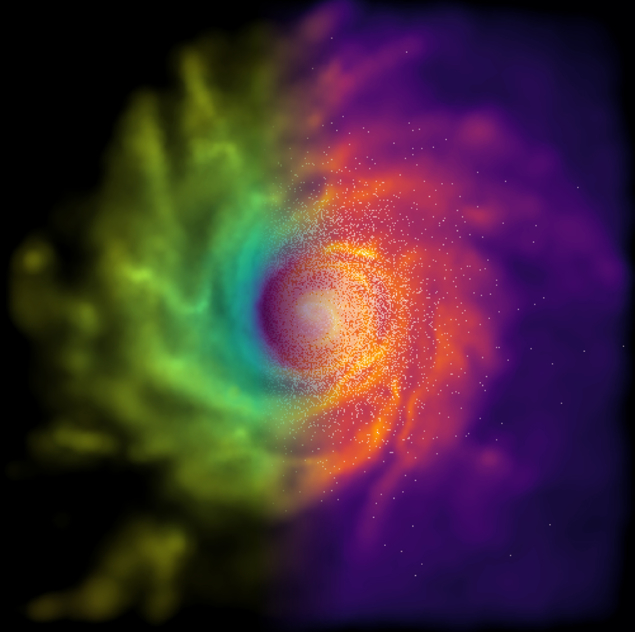
This supercomputer-generated image of a galaxy suggests that general relativity might not be the only way to explain how gravity works. Theorists at Durham University in the UK simulated the universe using hydrodynamical simulations based on “f(R) gravity” – in which a scalar field enhances gravitational forces in low-density regions (such as the outer parts of a galaxy) but is screened by the so-called chameleon mechanism in high-density environments such as our solar system (see C Arnold et al. Nature Astronomy; arXiv:1907.02977).
The left-hand side of the image shows the scalar field of the theory: bright-yellow regions correspond to large scalar-field values, while dark-blue regions correspond to to a very small scalar fields, i.e. regions where screening is active and the theory behaves like general relativity. The right-hand side of the image shows the gas density with stars overplotted. The simulation, which was based on a total of 12 simulations for different model parameters and resolutions, and which required a total runtime of about 2.5 million core-hours, shows that spiral galaxies like our Milky Way could still form even with different laws of gravity.
“Our research definitely does not mean that general relativity is wrong, but it does show that it does not have to be the only way to explain gravity’s role in the evolution of the universe,” says lead author Christian Arnold of Durham University’s Institute for Computational Cosmology.





